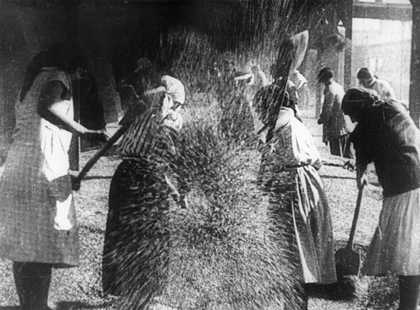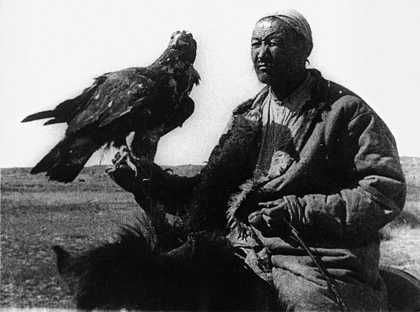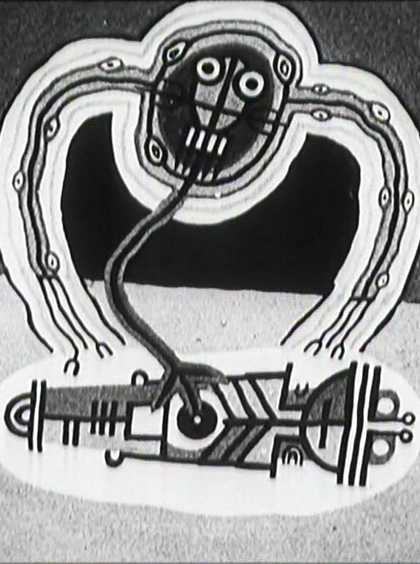The earliest films included in the programme for Magiciens de la Terre were made in the 1920s. The two presented here offer diverse yet remarkable reflections on cultural diversity and cohesion from Len Lye’s Tusalava a reflection on Australian culture to Dziga Vertov’s The sixth part of the world an epic exploration of the vastness and diversity of theSoviet Union.
Tusalava
Len Lye, UK 1929, 16mm, black and white, 9 min
Tusalava is a Samoan word, suggesting that ‘in the end everything is just the same’. In order to make this animated film, Len Lye produced more than 9,500 drawings between 1926–28. He has described having ‘imagined I was myself an Australian witchetty grub who was making this animated ritual dance film.'
The sixth part of the world
Dziga Vertov, USSR1926, 35mm, black and white, 73 min
Vertov employed eight teams of documentary filmmakers – eight Kinoks or Cinema-Eyes – in order to produce a reflection on the full cultural and economic diversity across the vast expanse of the USSR. He has written of this work: ‘Whether it is a newsreel, a comedy, an artistic hit-film, A sixth part of the world is somewhere beyond the boundaries of these definitions; it is already the next stage after the concept of ‘cinema’ itself … Our slogan is: all citizens of the Union of the Soviet Socialist Republics from 10 to 100 years old must see this work. By the tenth anniversary of October there must not be a single Tungus who has not seen A sixth part of the world.



